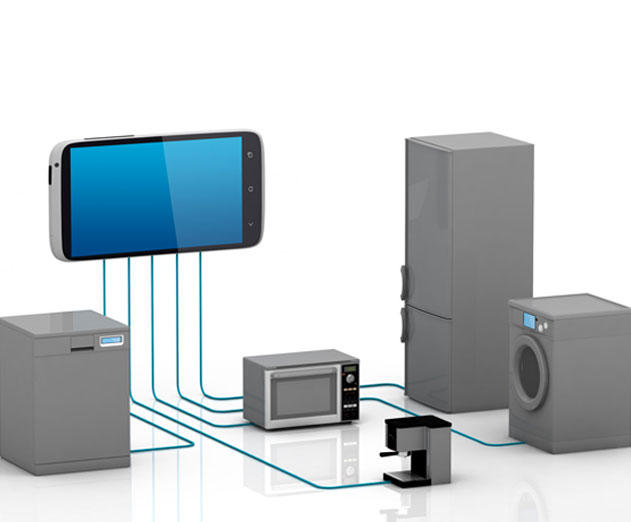Enterprise
Why smart apps will be the next phase in business app development
Thursday, October 20, 2016

|
Richard Harris |
It all started with desktop applications, then it moved to the web, then to mobile, then to multi-channel applications. With each new wave came new uses thanks to technological advancements. Smart Apps mark the next step in the app story. With the rise of the internet of things (IoT), big data and machine learning, it makes sense for apps to evolve to incorporate these new functionalities and businesses are investigating how to harness these capabilities to take full advantage of Smart App technology.
From a high level, Smart Apps gather massive amounts of data from sensors and other sources, using machine-learning algorithms and predictive analytics to make the information actionable for users to improve their experiences. The three key traits of Smart Apps are: context awareness, intelligence and proactivity.
Smart Apps are context aware in that they use personal, sensor and location data to offer personalized experiences, embedded in users’ processes and available on any channel or device. The use of analytics, machine learning and AI services make them intelligent, so they can make recommendations and predictions that guide users and things to take the next best step. Smart Apps come to the user, leveraging push notifications, chat bots and messaging services to proactively interact with users, making them all the more valuable.
Derek Roos, CEO at Mendix has alot to say about smart apps, so we recently sat down with him to pick his brain about smart apps in the enterprise, the challenges of building smart apps, and how you as a business, should approach building your first smart app.
ADM: What’s a recognizable example of a Smart App?
Roos: Most people are familiar with the navigation app Waze, which is in fact a Smart App. Here’s a breakdown of its Smart App characteristics:
- Context aware: Waze collects data from its users to determine the most efficient routes. As long as the app is open, it knows where its users are and where they are going.
- Intelligent: Using this data, the app analyzes average speeds, delays and other traffic patterns to make recommendations on the fastest available routes for each users’ trip. It also recognizes when users drive the same routes regularly and uses that data to make suggestions based on that driver’s individual preferences.
- Proactivity: Waze alerts its users when there are road blocks, police, accidents, traffic delays and any other disruptions on their planned routes. It proactively makes recommendations for rerouting based on this real-time information.
ADM: What about Smart Apps in the enterprise - what are some common use cases?
Roos: Smart Apps have been used across many industries to address a variety of challenges. For example, in the pharmaceutical industry the temperature of medication is key to meeting quality standards and regulations. Smart Apps have been used to monitor medication temperatures, using sensors as a way to ensure the best possible delivery of medical supplies. The apps can monitor every shipment in order to ensure proper temperature is maintained and it can also remind patients to take their medications on time.
Another industry using Smart Apps is the facility management industry. One facility services company in particular created a multi-device application to enable support personnel to receive alerts about service issues. The app aggregates data from thousands of sensors in places like coffee machines, soap dispensers, mouse traps, etc. Rather than the staff having to do manual checks, personnel know exactly when and where something needs their attention.
As you can see, the use cases go far and wide and can be applicable to just about any industry.
ADM: What are some of the challenges of building Smart Apps?
Roos: The challenge with Smart Apps is that they require many disparate technologies. Developers struggle with building viable business plans and try to integrate and manage a variety of different and complex IoT technologies, endpoints, platforms, back-end systems and data. Building new IoT and algorithmic business solutions also require specialist skills which can be hard to find in today’s market.
As a result, the process often takes a lot of time and effort and when it comes to innovation, companies can’t afford to delay time to market. The rapid pace of change is making it increasingly difficult for IT teams to keep up with new capabilities and advancements and falling behind is not an option. These challenges along with technology integration, data architecture, lack of resources and time management will cause many organizations to undergo a larger digital transformation.
ADM: What are the benefits of using rapid app development platforms to build Smart Apps?
Roos: One way to combat the challenges of building Smart Apps is to use a rapid app development platform (RAD). The visual development and collaboration features help speed up development and bring business stakeholders into the process. Rather than staring at lines of code, the business team can see exactly what the app looks like, what features exist and what changes need to be made. This last part is really important. Smart Apps are new ideas brought to life and therefore, they need to be explored and iterated upon based on real user feedback. When using RAD platforms, developers can easily deploy the app bit by bit so users can test it out and then share that feedback. The developers then use that feedback to work on the next iteration of the project.
Derek Roos, CEO of Mendix

Derek Roos, CEO of Mendix
Some RAD platforms have drag-and-drop connectors to IoT, big data and machine learning services. This makes the process of integrating these features as simple as it gets. By reducing the technical complexity of this process, developers are free to focus on building new experiences on top of these technologies.
RAD tools also allow for instant deployment via the cloud. Not only is this helpful for the iteration process, but it also enables auto-scaling and increases access for more users.
ADM: How do Smart Apps fit into organizations' larger efforts to transform their businesses?
Roos: With the overwhelming amount of data available, thanks to IoT, many companies don’t know how to handle it all. They look to new tools and processes to make good use of this data, but often it’s not used to its full potential.
When organizations use Smart Apps they have a way to get actionable insights from this data and can then operationalize it. This data can be used to streamline internal operations, improve customer experiences or create entirely new products and business models.
ADM: What is the current state of Smart App use/adoption?
Roos: Smart Apps first gained traction in the consumer arena; think of the Waze example mentioned before. However, there is increased adoption in the enterprise today. For example, in the airline industry, Smart Apps are used for equipment tracking to help engineers find equipment faster with a live-view of the locations of each piece of airline maintenance equipment. This saves engineers time which ultimately saves money and improves processes. This also results in more reliable, on-time flights which benefits the customer experience.
Another example is the entertainment industry. An entertainment firm built a Smart App that leveraged data from sensors in turnstiles of venues to understand the foot traffic of people at events. That way attendees didn’t have to wait in unnecessarily long lines to get into the event.
Other industries such as financial services, transportation and insurance are all starting to see the benefits of Smart Apps. Application adoption is still growing among enterprises and as they realize the benefits of using apps, they will quickly discover the upsides to having Smart Apps vs. “dumb”/static apps.
ADM: How should businesses approach building their first Smart App?
When starting a Smart App project, it’s important to address a challenge that is low-investment, but still high-value. Once the development and business teams know what the end goal is, it’s time to just do it. When building Smart Apps, developers should start experimenting right away and rapidly iterate in order to create the most effective and productive application. It’s okay to fail and fail fast, what’s most important is to learn and try again.
Editors note: As CEO of Mendix, Derek leads a pioneering team of software industry experts with the mission to bridge the gap between business and IT, making business application development dramatically easier, faster and collaborative. As a result, the company is achieving tremendous global growth and disrupting the way many of the world’s leading companies are innovating and differentiating. Derek earned a Master of Science degree in Business Administration from Erasmus University, Rotterdam. He is a highly sought speaker at IT conferences and is guest lecturer at several universities. Derek received the Ernst & Young Emerging Entrepreneur of the Year 2012 Award.
Read more: http://appdevelopermagazine.com/partner/link/?ref=

Become a subscriber of App Developer Magazine for just $5.99 a month and take advantage of all these perks.
MEMBERS GET ACCESS TO
- - Exclusive content from leaders in the industry
- - Q&A articles from industry leaders
- - Tips and tricks from the most successful developers weekly
- - Monthly issues, including all 90+ back-issues since 2012
- - Event discounts and early-bird signups
- - Gain insight from top achievers in the app store
- - Learn what tools to use, what SDK's to use, and more
Subscribe here









